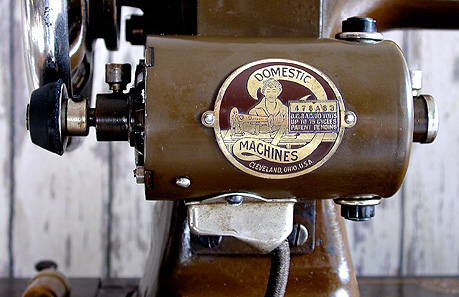
Domestic Sewing Machine Motor
The above image shows the attractive motor on the machine. Note that the motor has its own serial number.
There does not appear a way to adjust the conical rubber motor-drive wheel. After loosening a small retaining screw, the wheel can be slid back and forth until it contacts the handwheel. With this setup, when the smaller part of the cone contacts the wheel, the motor turns more revolutions for one rotation of the handwheel than would be required if the cone were in contact on its larger side.
The motor has lubricating cups on either side. To speed up the restoration process, we removed the cups and applied small amount of oil directly into the hole. The cups contain a fiber which apparently allows only a slow amount of oil to enter the motor bearing surface. This is probably done to prevent the motor from slinging oil over electrical components. Seen on top and bottom right-hand side of the motor are caps for removing the brushes.